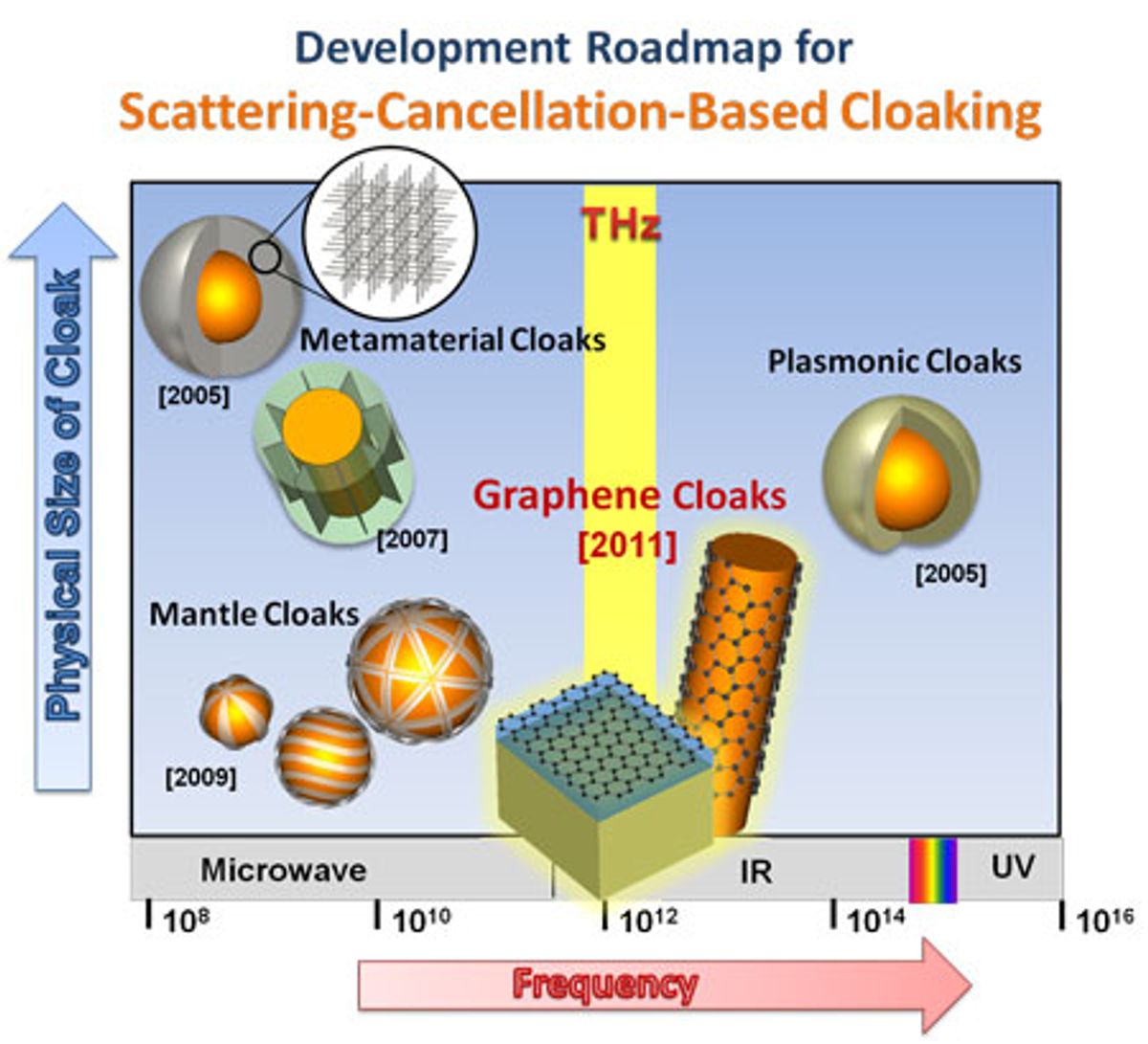Fans of the original "Star Trek" television show surely recall those dastardly Klingons employing a cloaking device that rendered their vessels invisible. Of course, that is science fiction, but in research coming out of the University of Texas at Austin, that capability sounds amusingly similar to a proposed use of graphene in providing an “active, dynamically tunable invisibility cloak.”
The research, which was originally published in the ACS journal Nano, builds on two fields of previous work. The first field is termed “plasmonic cloaking,” which uses metamaterial coatings, and the second is known as “mantle cloaking,” which achieves more or less the same effects as plasmonic cloaking but by using impedance.
"The graphene cloak idea stems from the mantle cloaking concept, which we have proposed at microwaves using frequency-selective surfaces, i.e., properly patterned conducting surfaces that can tailor their effective surface impedance at will," says Andrea Alù, at the University of Texas at Austin, in the Nanowerk article cited above.
Alù adds, "Due to the recent progress in understanding graphene's AC conductivity, we have realized that its unique features of ultrahigh mobility and largely tunable Fermi level may naturally provide the required reactive properties in a single atomic layer. The effective surface impedance of graphene can be tuned in real time, another great advantage of this graphene cloak, which makes dynamically tunable and switchable cloaking operation possible."
While invisible aircraft may leap to mind, the applications for this technology could be in the areas of noninvasive sensors and low-scattering electronic components.
"There is great interest in realizing low-scattering or impedance-matched electronic components, and we believe that the use of this graphene layer may realize this effect in an ultrathin geometry—much thinner than antireflection coatings or other available technology," says Alù.
Dexter Johnson is a contributing editor at IEEE Spectrum, with a focus on nanotechnology.




